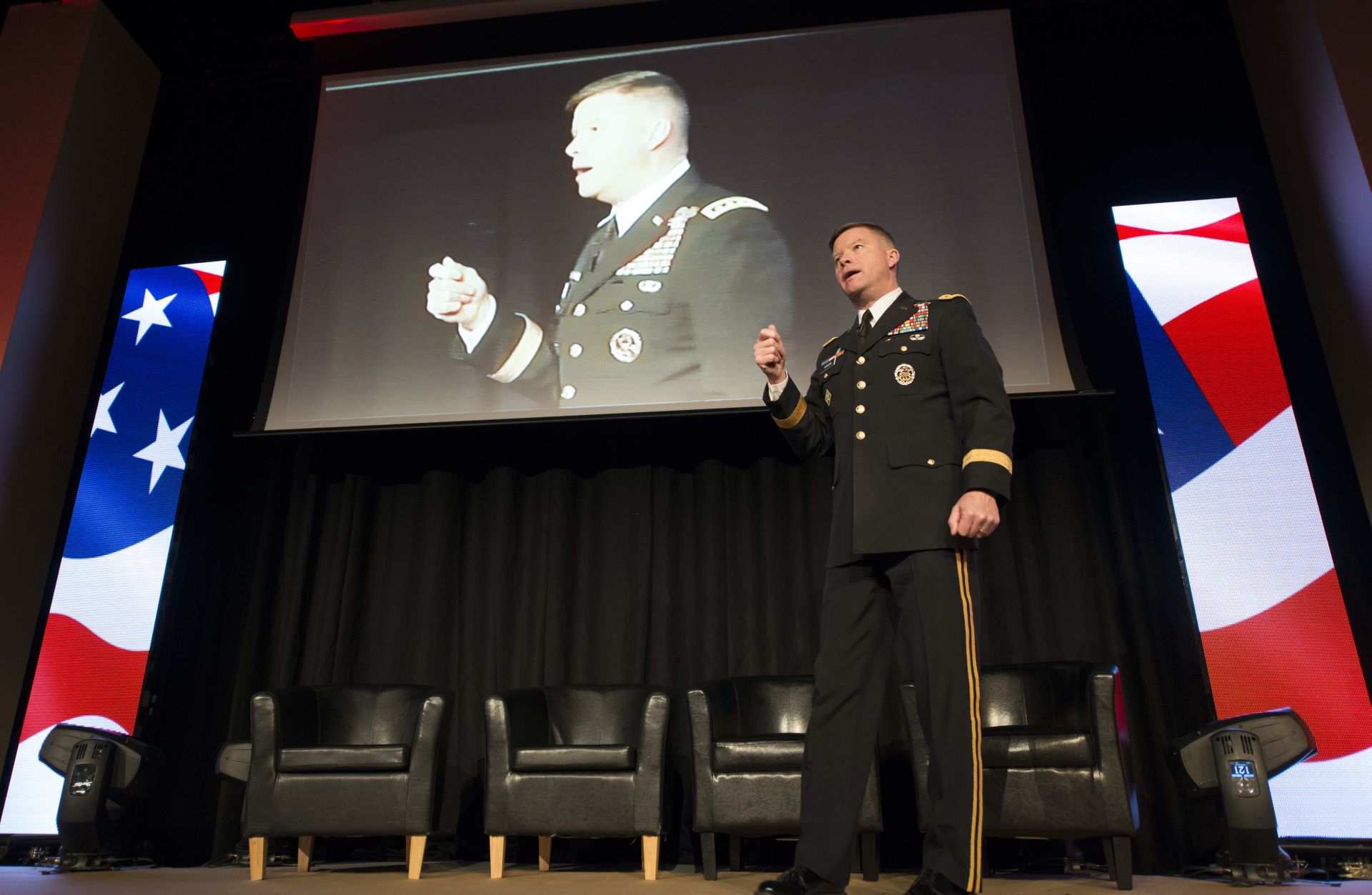The Army’s new concept of multi-domain battle gained momentum last week after senior leaders joined Marine Corps leadership to produce a white paper and set up a joint task force to start rolling with ideas that’ll change how Soldiers fight.
“At the very beginning, we’re trying to make this a very much joint concept,” said Gen. David Perkins, head of the Army Training and Doctrine Command, which is developing the concept.
Signifying the next step in building up the concept, Army Chief of Staff Gen. Mark Milley and Marine Gen. Robert Neller signed the white paper, which provides an overview of the concept to be reviewed by Marine Gen. Joseph Dunford Jr., chairman of the Joint Chiefs of Staff.
In October, the Army officially announced the multi-domain concept to broaden how the service fights on land, and sometimes with air assets, to also incorporating capabilities in the maritime and cyber domains into its doctrine.
One day, Soldiers may fire land-based missiles to sink ships or use cyber and electromagnetic tactics to help units maneuver inside enemy territory. Many other warfighting ideas can be inspired by the new concept, so the Army has planned multi-domain exercises to test and discover them, starting in the Pacific theater this spring, according to Perkins.
“A concept is an idea and now we have to operationalize it and get feedback from the folks that [will] actually use it,” he said Wednesday, following his keynote speech at the International Armored Vehicles conference.
U.S. Army Pacific is working closely with the joint Pacific Command to finalize these exercises, Perkins said, and start leveraging capacity and capability already found in their domains. TRADOC personnel are helping design the exercises and will plan to interact with exercise participants to find ways to fight in multiple domains.
Soldiers in Europe are expected to do similar exercises next year, the general said.
“Let’s take what we have now and use it better,” he said. “Where are our shortcomings? Can we highlight them through exercises and help inform our requirements for the future?”
Since the concept is not tailored to a certain theater, he said crosstalk between the services and TRADOC will hopefully shore up unique characteristics in how Soldiers deploy multi-domain tactics in various locations around the world.
“The principles could be the same but the actual characteristics of the solution could be quite different,” he said of the concept. “In a macro sense, it is theater non-specific.”
Besides large exercises, he said, TRADOC is also trying to get units to use the concept in their day-to-day activities and training so the command can get continuous feedback rather than just one chunk of it after an exercise.
It’s still too early to know when the multi-domain concept will be completed. Perkins previously said that the air/land concept that the Army had used before took eight years to be implemented after it first was introduced in 1973. While he doesn’t expect multi-domain to take that long, he does expect that getting all of the services on board will be a long process.
Bureaucracy, not the mindset of individuals, is perhaps the biggest challenge facing the concept’s rollout, he said.
As Congress typically appropriates money for tangible items, like equipment and vehicles, a change in thinking may be needed to get funds for future capabilities.
“We’re trying to take those resources and spread them out to capabilities, and the system is not set up to deliver resources like that,” he said. “It delivers resources for things, not capabilities. How do you start changing the bureaucracy and processes to align with producing what we actually need?”
But a portion of future funding will likely be needed to upgrade combat vehicles so they can keep an edge in full-spectrum warfare.
“I think what you’re going to have is no more one-trick ponies,” the general said. “You can’t just have a vehicle that does this, and that’s all it does.”
He said he’d prefer to have “optionally manned” vehicles that can be driven with or without a human crew, depending on the situation.
So, if one of these vehicles had to be part of a breaching operation, the Soldiers could dismount and later hop back on after the danger has passed. Or, in a firefight, Soldiers could get out and engage the enemy while the autonomous vehicle provides cover fire to them, he noted.
“I think what you’re absolutely going to find are combat vehicles that have multiple purposes and can operate in multiple modes,” he said.
There’s also more work in figuring out how to use the emerging domain of cyber in combat.
“Cyber has become a good forcing function for us,” he said. “It’s new and people know it’s new so they don’t necessarily have a preconceived notion on how to do it.”
Soldiers should start thinking more holistically about how all of the domains intersect, Perkins said. During an exercise, for example, he said he once maneuvered an infantry company to fix a cyber issue emanating from a building.
“That was a multi-domain battle solution,” he said. “It wasn’t a bunch of computer scientists busting down the door and taking care of this problem; it was a bunch of infantrymen.”










